If your yard is looking winter-drab, now is a perfect time to consider adding shrubs for winter colour next year. Take a walk in your neighbourhood and get inspired by shrubs still dotted with red, orange and black berries. Some attention-getters like evergreen holly, (the Christmas icon), are introduced species to Ontario. Others are native species which are an essential link in the local food chain for wildlife such as overwintering birds like robins, grosbeaks and waxwings. Some of these native shrubs are available through LEAF’s planting programs.
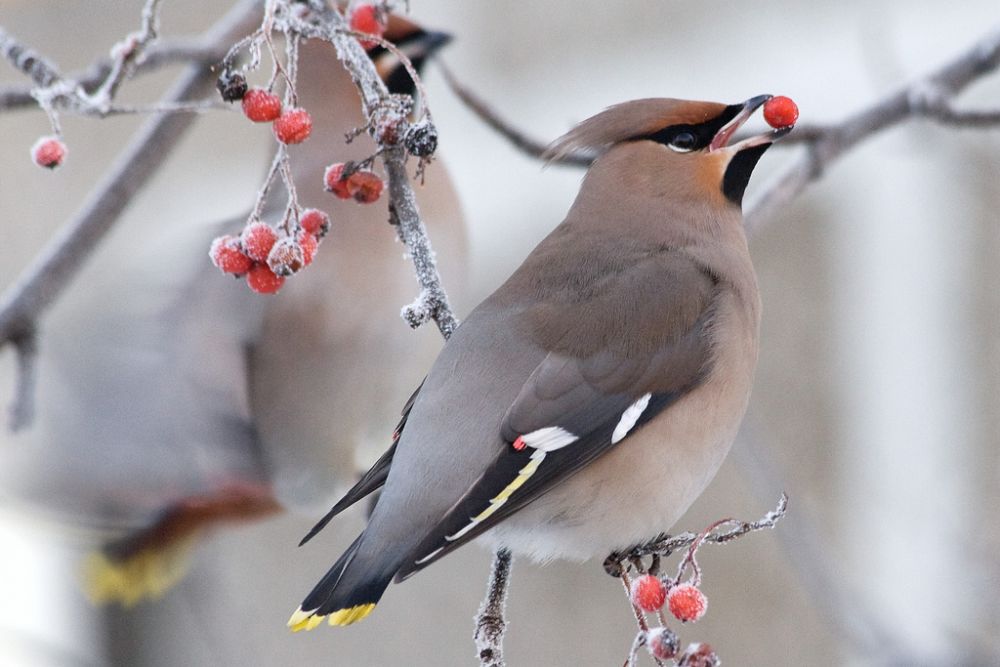
Cedar waxwing with berries
The six shrubs featured below usually stay decked out all winter in colourful edible berries.
- Black chokeberry (Aronia melanocarpa)- Bluish-black glossy berries cover this open, upright, rounded shrub. While the berries taste bitter to us, birds and other wildlife enjoy them as a cold weather food source.

Black chokeberry (Aronia melanocarpa) fruit
- Highbush Cranberry (Viburnum trilobum)- Bright, tart, red berries on this dense, rounded shrub mature in late summer/early fall and persist into the winter if not often picked off by birds or heavy frosts.
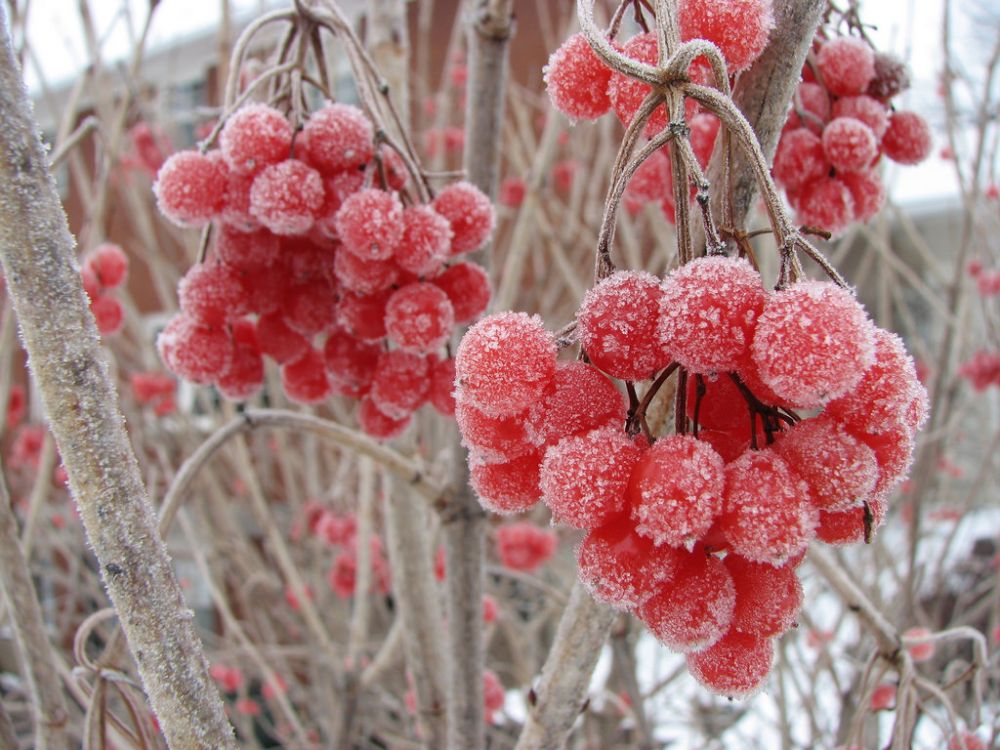
Winter berries of Highbush cranberry (Viburnum trilobum)
- Nannyberry (Viburnum lentago)- Oblong bluish-black berries contrast with red to purple foliage in the fall on this large, upright shrub.
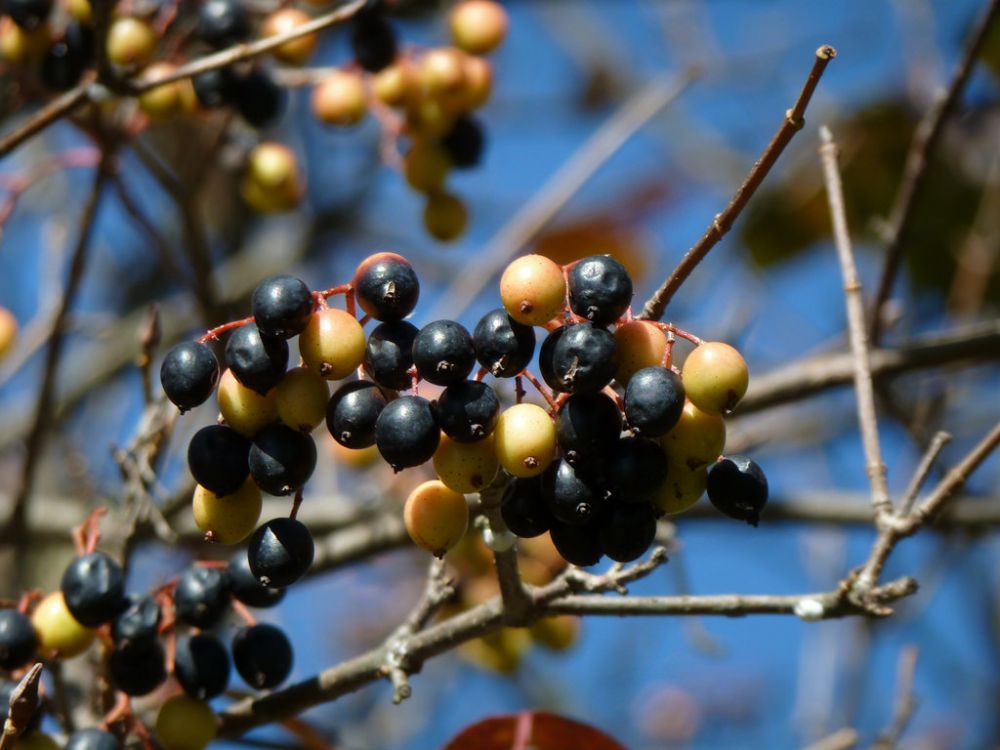
Nannyberry (Viburnum lentago) fruit
- Pagoda Dogwood (Cornus alternifolia)- A beautiful large shrub or small tree all year around. While it does not have the striking red or yellow bark many people associate with dogwoods, the pagoda boasts multi-season interest. Large clusters of white flowers that turn into bluish-black berries which are excellent for winter wildlife.
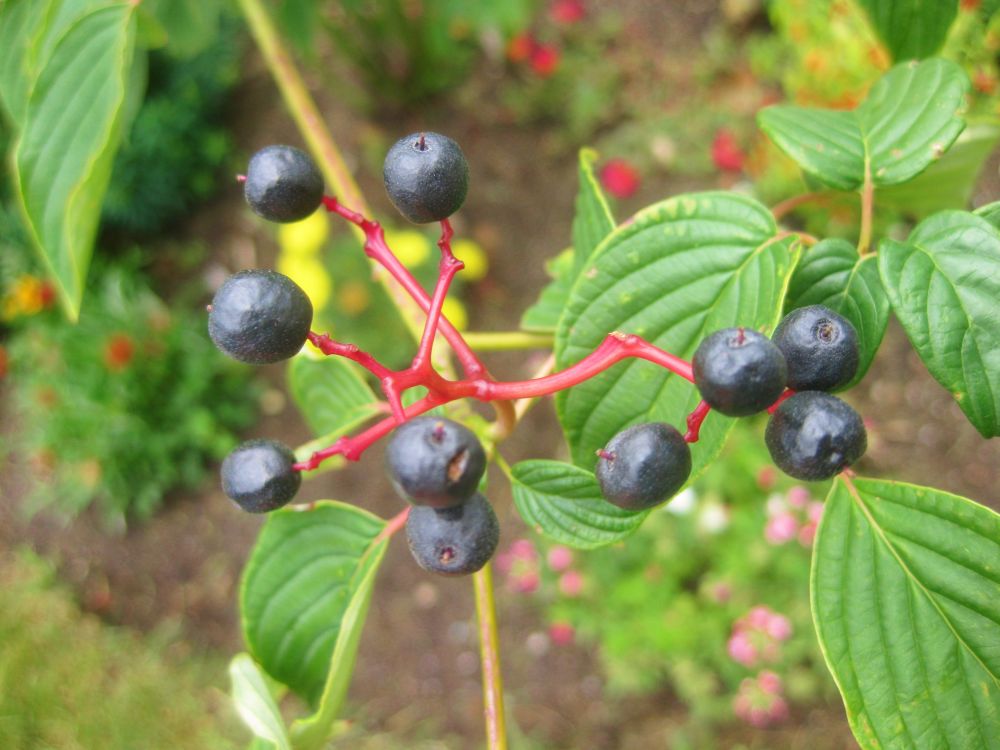
Pagoda dogwood (Cornus alternifolia) berries
- Common Snowberry (Symphoricarpos albus)- Snow white, waxy berries dot this shrub from late summer to early winter, providing shelter and food for many native birds.

Common snowberry (Symphoricarpos albus) fruit
- Pasture Rose (Rosa carolina)- Shiny red rose hips are eye-catching in a winter garden and provide a late season food source for wildlife. If you love the pink roses growing wild along country roads, you’re familiar with this sweet scented classic shrub.
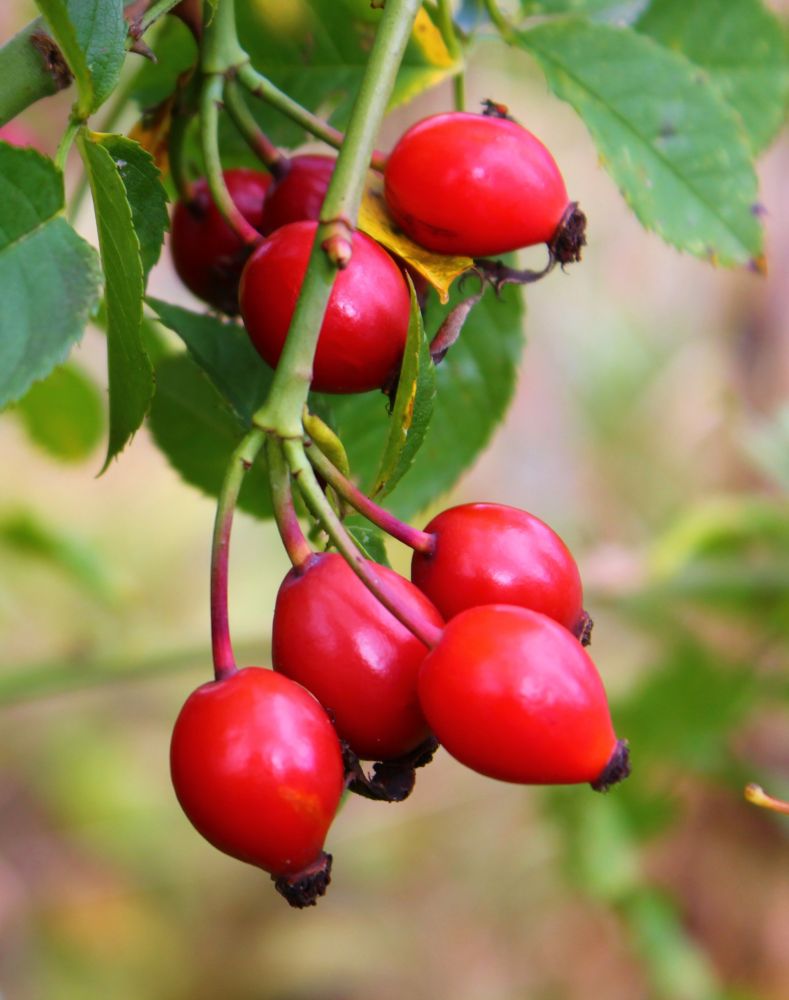
Pasture rose (Rosa carolina) fruit
To order these and other shrubs delivered to your door, visit our website.
The Backyard Tree Planting Program is supported by York Region, City of Markham, Town of Newmarket, Town of Ajax, City of Toronto, and Toronto Hydro.
A lifelong gardener, Andrea Bannister is a freelance communicator and mom of three outdoor-loving kids in Toronto, Ontario. Andrea is a new volunteer with LEAF.
